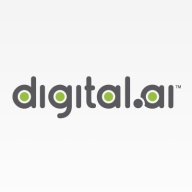

OpenText Application Quality Management and Digital.ai Agility compete in the application development space, with Digital.ai Agility offering a broader feature set and better value for price based on data.
Features: OpenText focuses on testing capabilities, integration with enterprise systems, and quality management. Digital.ai Agility emphasizes agile project management, collaboration tools, and extensive features for agile development.
Room for Improvement: OpenText could enhance user interface intuitiveness, improve scalability, and offer more comprehensive training resources. Digital.ai Agility might benefit from refining its pricing structure, expanding integration options, and reducing deployment complexity.
Ease of Deployment and Customer Service: OpenText provides straightforward deployment and strong support. Digital.ai Agility combines efficient deployment with robust customer service, appealing to those prioritizing extensive support.
Pricing and ROI: OpenText is cost-effective with strong ROI in quality assurance. Digital.ai Agility has higher initial costs but offers significant ROI through project efficiency and management effectiveness.


Enterprise business agility rests on agile planning that scales and has the flexibility needed to meet the needs of customers and the market. Digital.ai Agility enables organizations to scale up agile from the team level across the product portfolio, improve collaboration and efficiency, and deliver software that provides more value.
OpenText Application Quality Management offers extensive capabilities in test management, automation tool integration, and defect traceability, providing an efficient and user-friendly experience for tracking and managing testing workflows.
The platform supports test management by integrating with automation tools and managing the traceability of defects and requirements. It facilitates users with linking test cases to defects, uploading from Excel, and generating customizable reports, which enhances efficiency. Business Process Testing and requirement capturing for test cases further extend its capabilities. Users report concerns about its integration with other tools, particularly in DevOps and agile frameworks, as well as challenges with its complex interface and high cost. Improved integration, better browser compatibility, upgraded dashboards, and enhanced support for agile methodologies are recommended by many users.
What are the most important features of OpenText Application Quality Management?In industries such as finance, healthcare, and technology, organizations apply OpenText Application Quality Management for test management, planning, and automation. It is an essential tool for managing test scenarios, recording results, and supporting both manual and automated testing processes. This tool aids in regression testing, ensuring requirement traceability and acting as a repository for executing test cycles, thereby supporting robust quality assurance practices.
We monitor all Application Lifecycle Management (ALM) Suites reviews to prevent fraudulent reviews and keep review quality high. We do not post reviews by company employees or direct competitors. We validate each review for authenticity via cross-reference with LinkedIn, and personal follow-up with the reviewer when necessary.